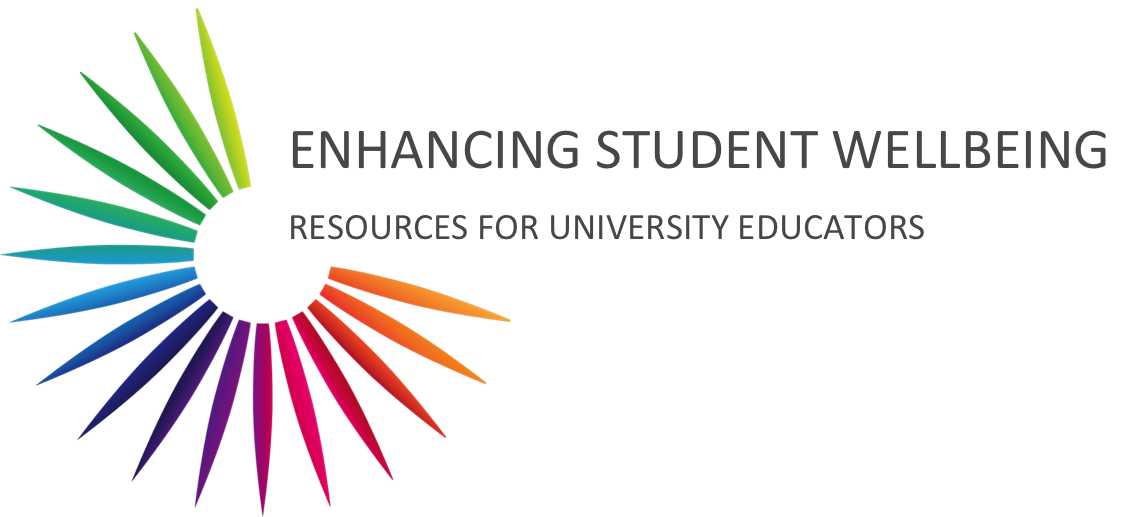Below are some strategies used by educators in different teaching and learning contexts.
- To make consultation process transparent, public, and accessible
How:
- Allocate specific consultation hours for students
- Spend consultation hours in public university spaces, e.g., student learning hubs
- Students can see when you are free and when you are with other students
- Reduces barriers for anxious students and creates more equal dynamic between teacher and student during the meeting.
example provided by A/Prof Ben McCann, French Studies, University of Adelaide
- To encourage students to recognise how things are going by mid-semester, and to seek help if needed
How:
- Build an LMS quiz about how students are going in different aspects of university life, with feedback
- Feedback includes links to relevant support services and anecdotes from other students who have overcome similar issues.
example provided by A/Prof Dawn Gleeson, Biology, University of Melbourne
- To provide an early resource, set expectations, and spark students’ interest
How:
- Provide supplementary information in short online videos, from the week prior to semester starting.
- Videos introduce central concepts of the subject, lab set up, and lab procedures
- e.g., one of the subject’s “biobytes” videos
- To read more, check out page 12 of this LTI grants report, which funded the development of some of the videos.
example provided by A/Prof Dawn Gleeson, Biology, University of Melbourne
- To motivate students to attend weekly classes
- To create a personable, relatable, quick mode of communication with students
How:
- Before each class, link the week’s activities to current events and issues in social media
- Present outline of week’s activities in videos, uploaded and shared via youtube
- Filming the videos on her iphone and not editing the content made them feel like Skype calls, relatable, and personable. Feedback from students on these videos was very positive.
- e.g., this video summary for week 5, and this video explanation of electrical conductivity.
example provided by Dr Anneline Padaychee, University of Melbourne
- To learn students’ stories and promote a sense of sharing and pride among students.
- To emphasise things in students lives that they are achieving, whether related to university of not.
How:
- In first five minutes of each class, ask students to share with the class something they have done in the past week that they are proud of.
- Shares her own examples as well.
- Records the examples on powerpoint slide for everyone to read.
example provided by Dr Abbie Grace, Psychology, University of Melbourne
- To help students understand their learning processes
- Also to help students identify the elements of their discipline that are helping them to develop their skills.
How:
- Ask students to explain the processes they used to complete a particular assessment.
- Give students ample time to express themselves in their own words, without judgement or criticism of their response.
example provided by Margot Felney and Christopher Nolan, Victorian College of the Arts, University of Melbourne
- To encourage students to use each other for support and feedback
How:
- Students create work individually, then ‘showcase’ their work to each other in class
- Peers provide feedback and suggestions for improvement
- the showcase and the peer feedback are not assessed activities.
example provided by Dr Lydia Woodyatt, Psychology, University of Adelaide
- To help students apply learning from earlier course activities
How:
- Present a topic or current issue
- Ask students to reflect on the topic, drawing on theories from other subjects in the course
- Ask students question about prior course content and its application to this issue
- As students discuss prior course content in relation to this issue, highlight to them how their understanding and skills have progressed throughout the course.
example provided by Dr Lydia Woodyatt, Psychology, University of Adelaide
- To encourage students to practice good etiquette in discussion forums
- To encourage students to see the forums as a useful place for discussion and clarification
How:
- Set clear expectations of discussion forum use (e.g., read and respond to each others’ posts, appropriate length of posts, discuss ideas and general queries) and model those expectations
- Construct mindful, considerate replies to students’ online questions
- Construct mindful, considerate questions in reply to students’ posts about course content to extend their thinking
example provided by Dr Abbie Grace, Masters of Aged Care, University of Tasmania
- To encourage students to consider important topics or questions for the course
- To identify where and how students might need further support
How:
- Consider the central topics of the subject and assignments. Read through the online discussions to identify those topics that have not been raised or that seem to have been avoided
- Post questions about those missing topics, so that students can respond and engage in discussion about them. Check that their responses to the question are accurate and helpful for other students.
example provided by Dr Abbie Grace, Masters of Aged Care, University of Tasmania
- To demonstrate the personable and approachable nature of the teaching staff
How:
- Create weekly audio or video recordings for the students.
- Treat the recordings as you would a face-to-face class:
- Talk to the students as though they are in the room with you.
- Instead of editing out errors, simply correct them as you talk.
- Ask questions of the students, suggest answers, and raise current issues that may be affecting them.
example provided by Dr Abbie Grace, Masters of Aged Care, University of Tasmania
- To help students identify with their professional identities and future selves
How:
- Address students (pre-service teachers) as future colleagues
- Have discussions about their career goals and how they will achieve them
- Talk about the challenges and choices that lead you to your current role
example provided by Dr Amanda McMadden, Education, Queensland University of Technology
- To reduce students’ fear of failure and set backs, and help them embrace such experiences as a learning opportunity
How:
- Talk openly about failure and set back as opportunities for learning
- Point out to students that learning doesn’t end with graduation, but continues throughout one’s career
- e.g., Amanda begins these discussions with the acronym: “FAIL: First Attempt In Learning”
example provided by Dr Amanda McMadden, Education, Queensland University of Technology
Further reading: Stanford University’s resilience project highlights the importance of failure and setbacks in learning.
- To proactively address students’ anxieties about placement
How:
- Make a list of frequently-experienced issues that students might face during placement and develop a set of strategies for each issue
- Disseminate to students prior to placement. In this example, the strategies were disseminated as a podcast interview with a counsellor. A booklet or video could also be appropriate.
example provided by Dr Amanda McMadden, Education, Queensland University of Technology
- To create opportunities for students to engage with industry services and receive feedback
- To emphasise that students’ learning is relevant for industry and real-world applications
How:
- Identify industry services that provide feedback to professionals (e.g., Wikipedia, for the non-fiction writing course in this example; other examples might include University or public journals and magazines, student or industry conferences, debate nights, open-mic nights, and community centre events)
- Encourage students to engage with that service as a learning experience (e.g., ask students to submit a written piece to Wikipedia, submit an expression of interest to a journal or conference, enrol in an open-mic night)
- Feedback provided by the industry (whether rejection or advice for submission) is real and relevant, but does not affect their grade for the subject.
example provided by Dr Rebecca Johinke, Department of English, University of Sydney
- To encourage student to be proactive in building social supports and relationships
- To emphasise the importance of social networks to the students
How:
- Run a social event early in the semester for the whole class (during the first class, or the week before semester).
- Include opportunities for students to talk with each other and learn from each other at the event
- Ask a student (or multiple students) to volunteer to coodinate future social events
example provided by Dr Grace Thompson, Melbourne Conservatorium of Music, University of Melbourne
- To give students the opportunity to test the skills they need for the assessment, in a low stakes activity during class.
How:
- Set tasks that require the same skills as the assessment, for students to complete in class.
example provided by Grace Thompson, Melbourne Conservatorium of Music, University of Melbourne

